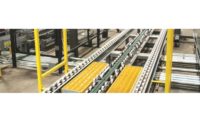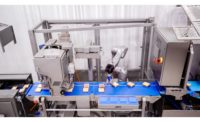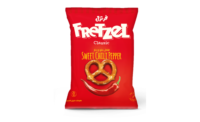The history of Nutresa dates back to 1920, when the Compañía Nacional de Chocolates Cruz Roja—later renamed Compañía Nacional de Chocolates S.A.—was founded in Colombia.
Over the years, and after its consolidation in the domestic and Latin American market, the company changed its name to Grupo Nutresa. Currently, the company operates in Colombia, Chile, Costa Rica, Guatemala, Mexico, Panama, the United States, Venezuela, Ecuador, El Salvador, Nicaragua, Peru, the Dominican Republic, Malaysia, the Philippines, and South Africa.
The company shows its commitment to sustainability by being part of the Dow Jones Sustainability Index, which evaluates the sustainability of thousands of organizations listed in the main global stock markets.
The chocolate offering
The company has nine food product lines, most notably chocolate products. Production is carried out in five plants: two in Colombia, one in Peru, one in Costa Rica, and one in Mexico. The latter provides more than $60 million a year in revenue—about 10% of Nutresa’s total business—as the subsidiary with the biggest growth potential in this segment.
Aiming to meet its business goals, Nutresa Mexico has been working closely with packaging machinery specialist Cama Group for the last 10 years, allowing Nutresa to check the reliability of the equipment provided by this Italian manufacturer.
“We knew their machines since we had tested them in our chocolate lines. This provided us all the assurance to acquire new equipment for other production lines, such as Cremino and Muibon,” says Carlos Toro, Operations Manager at Nutresa Mexico.
Cremino is a praline made of hazelnuts and cocoa.
“Its size and texture are really unique, so this cream stands out in all markets thanks to its appealing look, fine taste, and competitive price,” says Toro, adding, “For its part, Muibon is a wafer filled with hazelnut cream, covered with chocolate and peanuts.”
Main challenges
In both cases, the Nutresa Mexico managers had to face a couple manufacturing challenges to implement these machines.
The first one was increasing productivity, which means more kilograms of product output for a specific number of man-hours. The second challenge involved reducing pressure on workforce acting on end of lines—a very labor-intensive part of the process, particularly as it relates to packaging. This compelled the company to explore new alternatives and look into Cama’s IG270 machine for Cremino and Cama’s IF296 machine for Muibon.
For this reason, Nutresa Mexico decided to automate one of the two Muibon lines, and the only Cremino line, in both cases with great advantages, according to Toro.
“These Cama Group machines enable us to pack all chocolate bars in different formats intended for different channels: sweet wholesalers, supermarkets, and membership-only retail stores,” Toro said. “These machines are very flexible, comprehensive solutions that allow us to cover these three formats.”
For Cremino, the Nutresa Mexico teams thermoform the trays, the IG270 model takes those trays from a feeder, and by means of robotic arms, grabs the chocolates transported on belts, and puts pieces on the trays.
As for Muibon, the IF296 machine is a monobloc unit that assembles the display box that contains the wafers, loads the wafers inside the box, and then seals it with hot glue.
Benefits of the machines
Installation of the IG270 and IF296 machines has enabled a 14% increase in line productivity.
This translates to the production of 300 chocolate bars per minute for Muibon. Since there are two lines, that means 600 units per minute at the Nutresa Mexico plant.
As for Cremino, the company is able to produce 1,080 units per minute.
Features of the IG270 and IF296
The model IG270 is an automated loading unit that includes two Triaflex robots. These robots with carbon fiber arms are suitable for the quick and smart handling of products. An intelligent vision system allows these robots to sort and pick loose products in a production line and put them in a container, box or conveyor by means of a preset pattern.
“Triaflex robots implement the technology patented by Cama, which enables the IG270 to be one of the machines with the smallest footprint in the market. This machine also offers an enhanced modularity and dynamic features which are part of our Break Through Generation (BTG) technology,” explains Óscar Hidalgo, sales manager for the Latin American market at Cama Group. Therefore, this machine is optimal for packaged and unpackaged products, allowing a very quick format changeover.
For its part, the IF296 is a high-speed monobloc machine integrating robotic units to assemble, load and wrap up boxes, as well as to handle wrapped products and flow pack. This machine guarantees a smooth handling of the product, features format changeover parts for a quick release and a reduced footprint.








